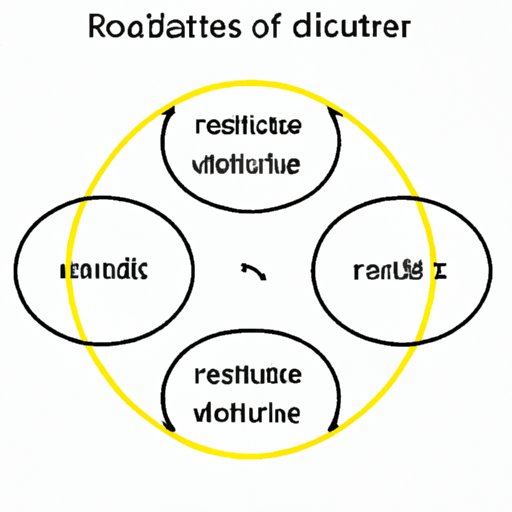
I. Introduction
Circles are one of the most important shapes in mathematics. They appear in everything from the microscopic world of physics to the everyday objects we use in our daily lives. One of the most fundamental properties of a circle is its circumference, which is the distance around the outside edge. Understanding how to calculate the circumference of a circle is essential for solving many real-world problems. In this article, we will explore how to find the circumference of a circle using the formula and offer tips and examples to help you master this math concept.
II. Definition of Circumference and Diameter
The circumference of a circle is the total distance around the edge of the circle. It is the same as the perimeter of other shapes, such as a square or rectangle. The diameter of a circle is the distance across the circle, passing through the center point. It is twice the radius of the circle.
The main difference between circumference and diameter is that diameter is a straight line, while circumference is a curved line. Additionally, the diameter is a measure of the distance across the center of the circle, while the circumference is measuring around the outside edge.
III. Formula for Calculating Circumference
The formula for calculating the circumference of a circle is: C = 2 * π * r.
Where:
C is the circumference of the circle
π (pi) is a constant that is approximately equal to 3.14
r is the radius of the circle, which is half the diameter
To find the circumference of a circle, simply multiply the diameter by π or use the formula above using the radius instead of the diameter.
For example, let’s say you have a circle with a diameter of 6 centimeters. To calculate the circumference, you would use the formula:
C = 2 * π * r = 2 * 3.14 * 3 = 18.84 cm
So, the circumference of the circle is 18.84 centimeters.
IV. Examples of Finding Circumference
Now let’s take a look at some examples of how to find the circumference of a circle using different dimensions, fractions, and decimals.
Example 1:
Find the circumference of a circle with a radius of 4 centimeters.
Solution:
C = 2 * π * r = 2 * 3.14 * 4 = 25.12 cm
Example 2:
Find the circumference of a circle with a diameter of 10 meters.
Solution:
C = 2 * π * r = 2 * 3.14 * 5 = 31.4 m
Example 3:
Find the circumference of a circle with a radius of 2/3 inches.
Solution:
C = 2 * π * r = 2 * 3.14 * 2/3 = 4.19 in
Example 4:
Find the circumference of a circle with a diameter of 1.75 centimeters.
Solution:
C = 2 * π * r = 2 * 3.14 * 0.875 = 5.49 cm
As you can see, each example uses the same formula to find the circumference but with different dimensions.
V. Interactive Diagrams, Animations, or Videos
Interactive diagrams, animations, or videos can help visual learners understand how to measure the circumference of a circle. Below is a video tutorial that demonstrates how to find the circumference of a circle step-by-step.
VI. Common Mistakes and Tips
There are a few common mistakes people make when calculating the circumference of a circle. One of the most significant mistakes is forgetting to use the correct formula. It’s also essential to make sure you’re using the correct units of measurement, including centimeters, inches, or meters.
To avoid mistakes, it’s important to double-check your work and use a calculator to ensure accurate calculations. Additionally, it’s a good idea to write out the formula and plug in the numbers to minimize the chance of making mathematical errors.
VII. Practical Applications of Circumference
The practical applications for the circumference of a circle are vast. Most commonly, the understanding of circumference is useful in finding the perimeter of circular objects and building round shapes in construction.
Here are a few examples:
- Calculating the diameter of a crater on the moon using photos taken by a spacecraft
- Determining how much fence material is needed to enclose a circular garden
- Designing circular pools or round patios
- Creating circular conveyor belts for manufacturing facilities
- Calculating the circumference of the earth, planets and other celestial bodies
VIII. Conclusion
In conclusion, finding the circumference of a circle is an essential skill that has many practical applications. The formula for calculating the circumference of a circle is straightforward, but it’s important to be careful and use the correct units of measurement. By taking the time to understand the formula and practice working with examples, you will be able to apply this knowledge in many areas of your life.
Remember to use the resources available to you, such as calculators and interactive diagrams, to help you understand and visualize this math concept. With practice and patience, you can master the formula for finding the circumference of a circle.




